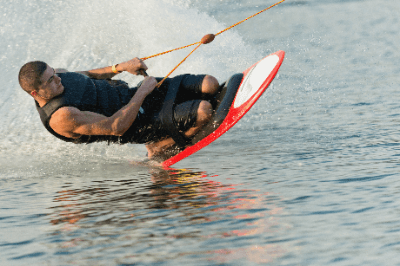What Is a Kneeboard?

A Kneeboard refers to a type of board shorter than a surfboard, ridden in a kneeling position rather than standing, similar to sitting on one’s knees. It is also the term used for water sports involving the use of such a board.
Originating in Sydney, Australia, during the 1960s, when longboards were predominant, Kneeboarding emerged as a pursuit of greater speed and carving thrills (riding waves while carving them).
The dimensions of the board typically range from approximately 49 to 60 inches in length and 20 to 24 inches in width. The prevalent type features two fins on the bottom, resembling the dorsal fins of a fish.
To ride the waves, the rider attaches fins to their feet, kneels on the board, and controls it through weight shifts.
Enthusiasts of Kneeboarding are often referred to as “Kneeboarders” or simply “Knees.” The popularity of Kneeboarding significantly declined in the 1990s with the rise of bodyboarding.
Uses of Kneeboard
Kneeboards find application in marine sports such as surfing in the ocean, as well as engaging in recreational activities on lakes and rivers, often towed behind water skis or boats.
In contrast to standing on a surfboard, riding a Kneeboard in a kneeling position offers a closer proximity to the water’s surface. This perspective makes even small waves appear larger, providing a heightened sense of speed. The lighter weight of Kneeboards compared to traditional surfboards allows for easy turns with minimal weight shifts. Moreover, the proximity to the water surface allows riders to interact with the waves more closely.
Kneeboarding contests are held annually in Victoria, Australia, showcasing the sport’s popularity. Due to the ability to ride in a kneeling position, Kneeboarding is accessible to individuals with disabilities, and Para Surfing events are organized. Kneeboarding behind motorboats has become a popular summer leisure activity, enjoyed by women and children alike.